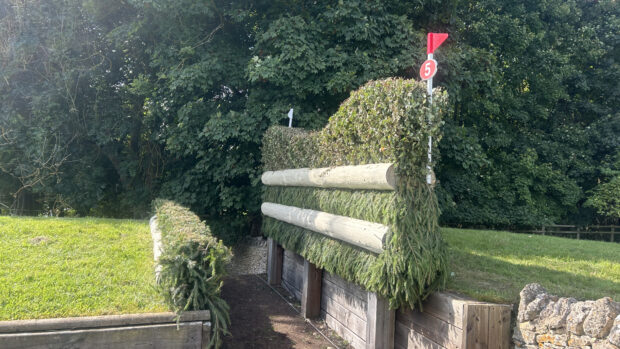Corners require accurate riding and can be daunting for both horse and rider. There are several ingredients that make up a good jump over a corner. Here we list the things you need to check off before you take off.
Speed and control
Firstly make sure you don’t approach the corner too fast. Keep it controlled and show the corner some respect as they are often upright, unforgiving fences. The canter needs to be active and have quality without being fast.
Continued below…
Looking to hone your skills with some schooling? How about these?
- Training with four-star event rider Caroline Moore in Shropshire
- Train with prolific eventer Jeanette Brakewell
- Attend a Tim Cheffings clinic in Devon
- Train in Essex over a cross-country course
Find your line
Focus on the centre of the back of the corner right in the middle of the flags. It’s very important that you don’t try to jump the widest part of the corner as this can make the fence almost impossible as you move up the levels. So when training in the early stages, train yourself and your horse to jump near to the flag on the narrowest part of the corner. This means that your horse will be used to jumping the tricky narrow part when faced with a corner fence at competition. Whichever line you pick, stay on it and don’t allow your horse to drift. Keep your shoulders square onto the fence (and the horse’s too.).
Balance
Ensure your horse is between your leg and hand. Think of creating a funnel between your two reins to channel your horse on exactly the line you want to jump the corner on.
Continued below…
Want to put your schooling to the test? How about these competitions?
- Hunter trial in Lincolnshire
- Horse trials in Northumberland
- Go unaffiliated eventing in Dorset
- Try a mini one-day event in Norfolk
- Eventing in Somerset
- Go to a one-day event in Shropshire
Start small
Once horses learn to run out it’s very hard to stop them from doing it in the future. Even genuine horses will run out if they can’t see their way through. So in order to build up confidence and to help minimise the chances of your horse learning to run out, start training over small corners. You can easily build your own corner to train over at home, using plastic blocks or small barrels with poles. You can use a guide pole at the side of the fence to help keep your horse on his line if you find him struggling with the question. Don’t build it too wide to begin with – you can open it up later when you gain confidence and know your line.
For more events and clinics visit Equo, Horse & Hound‘s online entry system




